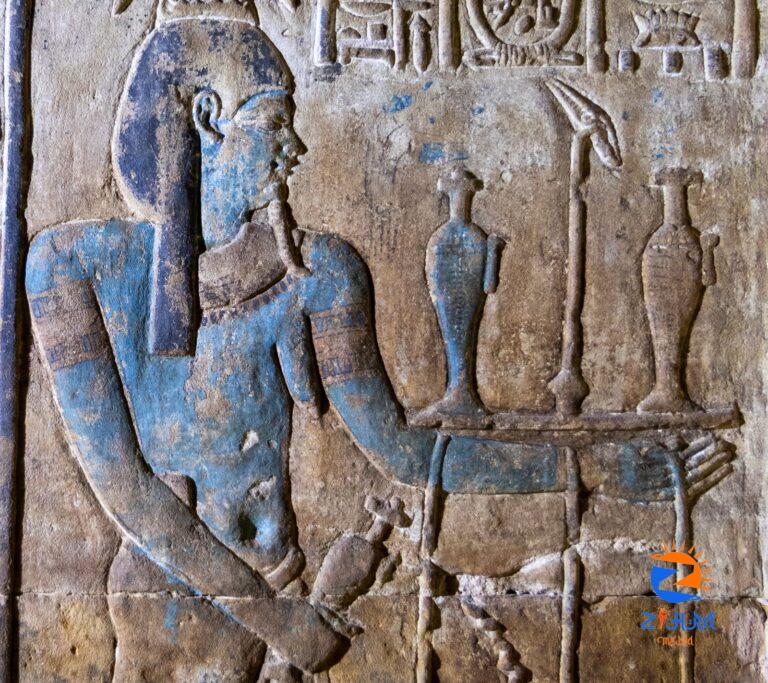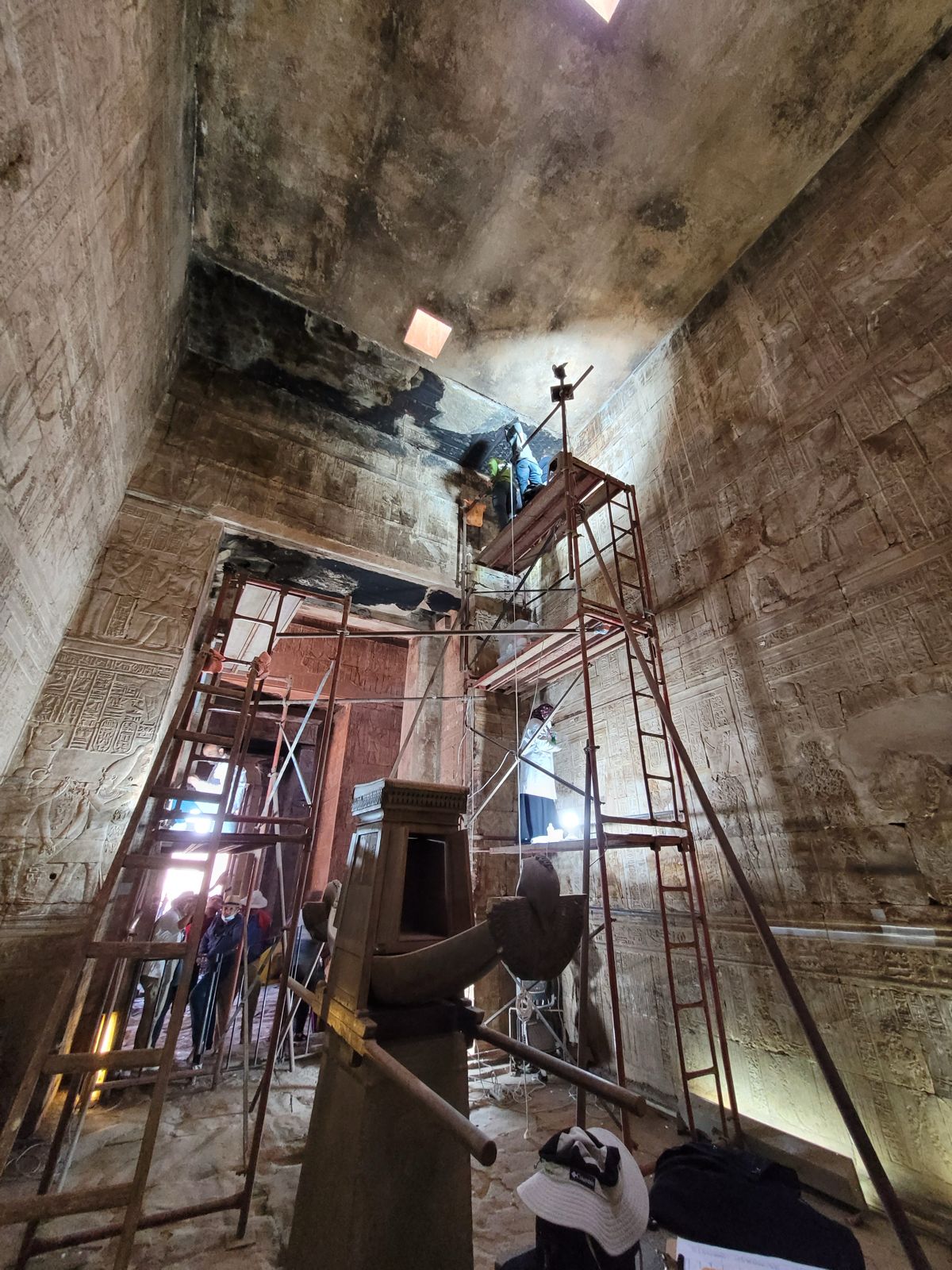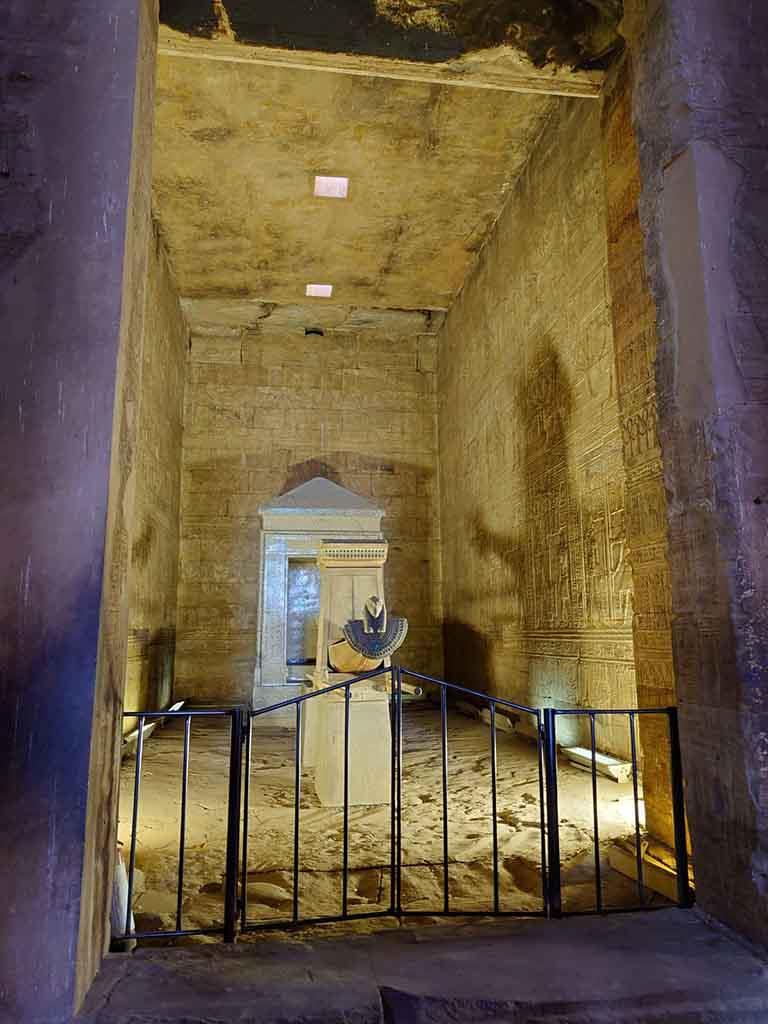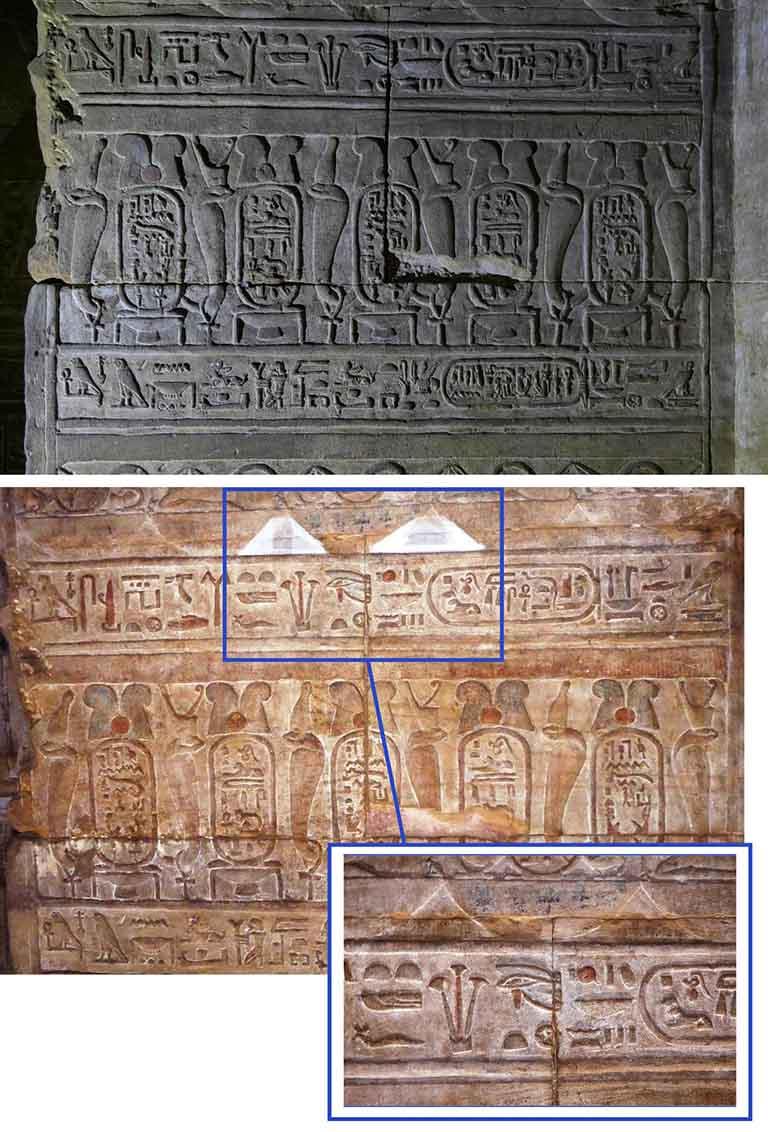
[ad_1]
A joint Egyptian-German archaeological mission has made a significant discovery at the Temple of Edfu during restoration work on the temple’s roof, funded by the Gerda Henkel Foundation, having uncovered the original colors of the temple’s walls and inscriptions that had been hidden for centuries.

The Egyptian Minister of Tourism and Antiquities praised the efforts of the restorers involved in the project, highlighting their dedication to preserving Egypt’s cultural heritage.
He emphasized the importance of restoring the temple’s original colors and urged the team to expedite the work to prepare for the upcoming winter tourism season.
The temple restoration project comes as part of a broader strategy to preserve Egypt’s cultural heritage.
The project includes cleaning the temple walls, documenting its texts and scenes, and restoring its interior. These efforts will not only enhance the temple’s appearance but also provide valuable insights into ancient Egyptian culture and history.
New discoveries
During restoration work at the Temple of Edfu, archaeologists have made various significant discoveries.
The team uncovered remnants of colorful scenes and inscriptions written in Demotic script, a type of ancient Egyptian writing.
They also found traces of gold that was used to gild the temple’s carvings and adornments.
The Secretary-General of the Supreme Council of Antiquities praised the efforts of the archaeologists and restoration team. He emphasized that these discoveries will help to restore the temple to its original state, preserving its historical and cultural significance.
The project also aims to improve the tourist experience for visitors to the temple.
The gead of the Egyptian Antiquities Sector, Ayman Ashmawy, revealed that some buildings within the temple were once covered in thick layers of gilded copper, which the team successfully uncovered in several areas of the temple.
The restoration team has worked to remove dirt, debris, and salt deposits from the temple’s surfaces. This process has revealed the original colors that once adorned the relief carvings.
The team is now analyzing and restoring these colors to their former glory.

German archaeologists involved in the restoration project at the Temple of Edfu have highlighted the significance of their findings.
According to the project director and head of the Egyptology department at Julius Maximilians University of Würzburg, Martin A. Stadler, the high quality of the colors found on the temple walls reflects the advanced state of ancient Egyptian art.
The team also discovered a unique Demotic inscription within the Holy of Holies. This inscription, written in ink,discusses the entry of priests into this sacred area – a significant discovery, as personal writings are typically found on the outer parts of temples, not in the main chamber.
Project manager and researcher Victoria Altmann-Wendling emphasized that the discovery of the original colors has provided valuable insights into the scenes and hieroglyphic writings depicted on the temple walls.
She noted that these colors give this temple’s Holy of Holies a unique character, especially when sunlight enters.
These discoveries offer new perspectives on the religious practices of ancient Egyptian priests and the artistic techniques used in the construction of the Temple of Edfu.

The Temple of Horus in Edfu is one of the best-preserved temples in Egypt, and the second largest temple from ancient Egypt.
It houses a collection of inscriptions and drawings that record important information about the ancient Egyptian language, ancient Egyptian mythology, religious beliefs, and worship practices.
Construction of the temple began during the reign of King Ptolemy III Euergetes and was completed during the reign of King Ptolemy XII.
[ad_2]